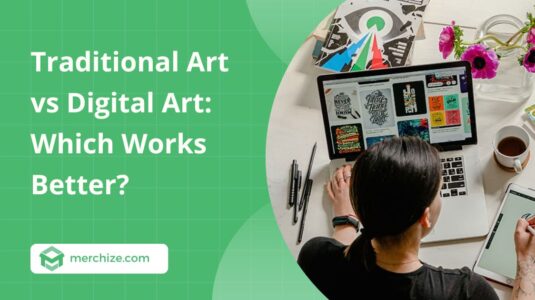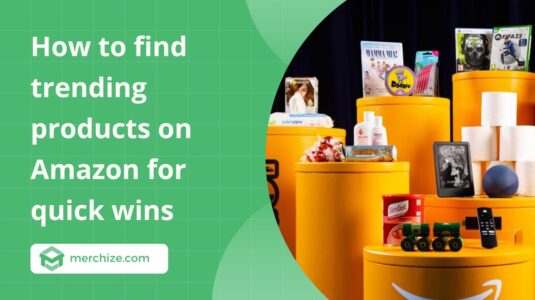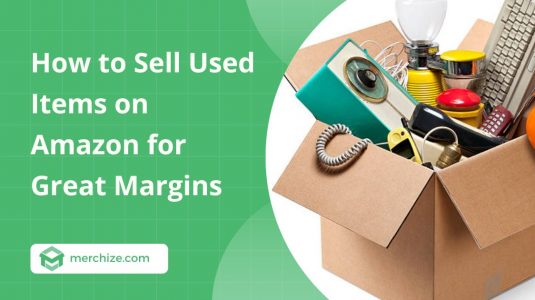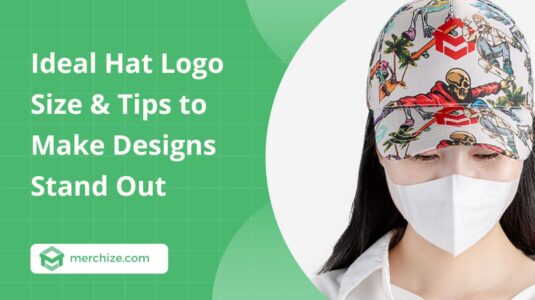Contents
Print on Demand is one of the new-generation business trends with no risk and low investment. Everyone can participate in this market but not everyone knows methods to create winning artwork. But don’t worry, we got your back. In this article, we will give you the main ways to craft trending and eye-catching designs for your print on demand business.
First Things You Need to Know
Before start learning how to design for print on demand, you need to know the difference between POD and digital design. If digital designs focus on the screen look purpose, printing design is for the real look in physical materials such as clothing, canvas, ceramic, etc.
Remember these important things when creating designs for print on demand:
- Focus on Niche Products: Rather than spreading your efforts across a broad range of products, it’s more effective to concentrate on a specific niche. For example, if you’re designing for the pet market, start by focusing on one type of animal, like cats. Once you’ve established a strong base, you can easily adapt those designs for other animals, such as dogs.
- Stay Aware of Trends: Keep up with current design trends to ensure your products stay relevant and attractive. However, balance trendiness with originality to avoid oversaturation and ensure your designs remain unique and recognizable.
- Keep it Simple: Overly complicated designs can confuse or overwhelm customers. To ensure your designs are easily understood and appealing, stick to simple, clear concepts that convey your message effectively.
- Make Your Designs Stand Out: Eye-catching and creative designs are key to grabbing customers’ attention. Unique, remarkable ideas tend to keep people engaged longer, increasing the likelihood of making a sale.
- Be Unique, but Familiar: With so many stores competing for attention, it’s essential to differentiate yourself. One way to do this is by taking popular, trending designs and adding your own twist. Customize them with your brand’s unique elements to stand out while still resonating with current trends.
- Stay Consistent: Building a recognizable brand takes time and consistency. Stick to a signature design style, so over time, customers will associate that style with your brand. This familiarity will make them more likely to return when looking for products that match your aesthetic.
- Incorporate Brand Identity: If you’re building a brand, weave elements of your identity (like colors, fonts, or logos) into your designs. This will help establish brand recognition and create a cohesive look across your product range.
3 Main Steps to Create Print on Demand Designs
As a POD seller, we all know that everyone has their own design process and secrets to success and of course, they don’t want to share them with others. Today, we will reveal the 3 main steps to create your print-on-demand designs.
1. Generate Design Ideas
To create high-quality designs along with brand values, finding ideas and concepts is essential. Additionally, they will help your team work together more effectively.
If you want to find great design ideas for print on demand products, you can follow the steps below:
- Understand Your Brand and Products: Identify key elements like your brand’s vision, goals, market, and target audience. This will guide your design criteria and ensure your ideas align with your business strategy.
- Gather Inspiration from Multiple Sources: Research successful stores, competitors, and design trends. Explore both free and paid design websites, social media, and platforms like Pinterest, Instagram, and Etsy for fresh ideas.
- Study Customer Preferences: Pay attention to customer feedback, reviews, and social media interactions to better understand what designs resonate with your audience.
- Explore Current Trends: Stay up-to-date with design trends in your niche, such as popular color schemes, typography, or themes that attract attention.
- Leverage Niche Communities: Join online communities, forums, or social media groups related to your niche to gain insight into what customers are currently interested in.
- Brainstorm Creatively: Collaborate with your team to generate unique, creative, and trendy design concepts. Review all ideas, no matter how unconventional, as they could spark further creativity.
- Review and Refine: Evaluate and shortlist the most promising ideas, ensuring they align with your brand, product offerings, and audience preferences.
- Test Your Ideas: Conduct polls, surveys, or A/B tests with your audience to see which designs generate the most interest or potential sales.
- Complete Concepts: Finalize your chosen design ideas and prepare to start the actual design process using your preferred software.
You can apply this process to generate design ideas, print on demand business name ideas, and any ideas.
2. Prepare Your Design Files
Make sure your design file is set up in the right way to avoid issues like unclean edges, color deviation, invisible transparent glow, etc. after printing. Below is the list to create a print on demand standard design files:
- Dimensions (width and length): Each print on demand product has a fixed print area. Therefore, you need to ensure your design matches the specific print area of each product.
- DPI (dots per inch): Standard DPI is 300. If you use lower than this number, it may cause pixelated and unclear images.
- File format: Common formats for the POD industry include .ai, .psd, and .png. Use Adobe Illustrator or Photoshop for adjustable designs, and PNG for transparent backgrounds.
- Color model: Use CMYK for print projects, as this color model is best suited for accurately replicating digital colors on physical products. In addition, if the printing technique supports RBG, you can also choose it.
- Bleed setting: This adds extra space around the edges of the design to prevent parts of the image from being cut off during the printing process.
Ensure that your file dimensions exactly match the width and length of the print area for each product. If the dimensions differ, the system won’t be able to process or print your design correctly.
3. Design or Outsource
As you work with a designer, you need to consider all the design principles above. Additionally, sharing information, customer insight, and your expectations with a designer will help you have a smooth collaboration. Giving them some reference templates is also a great way to create perfect designs.
Plus, many print-on-demand designers post their artwork on platforms such as Behance, 99designs, Fiverr, and e-commerce platforms. This makes it easier for you to find someone who fits your style and brand criteria.
In case you are a new seller with a low investment cost but have design knowledge, you can create your own designs and save money instead of hiring a professional designer. Furthermore, since you know your brand best, you can create the most suitable artwork.
On the other hand, for amateurs, creating print on demand designs can be a huge challenge. In this case, the fastest and most effective methods are getting free or buying clipart and artwork.
Best Sources for Print on Demand Designs
Free Sources for Print on Demand Designs
If you are stuck and need help deciding what to put on your designs, the top-rated resources below can help.
- Freepik: Offers unrestricted access to free digital art and the latest design trends across various industries. With a premium subscription, you can unlock over 42 million high-quality items.
- Pixabay: Features over 1 million free high-resolution images, vectors, and clipart, all created by users and perfect for creative projects.
- Unsplash: Provides access to over 1 million free, high-quality photos, which you can easily explore using smart filters to find inspiration.
- Vecteezy: Thousands of free templates and vector graphics for print-on-demand designs. Its unique feature allows users to leave comments, making it easier to find valuable resources.
- Gratisography: A collection of quirky and unique stock images covering various topics like animals, architecture, food, and fashion, which you can download and edit for personal or commercial use.
- Morguefile: Offers over 400,000 lively, free-to-use photos, making it an excellent resource for those selling canvas art.
- Stockvault: Provides an extensive library of graphics and photos for POD designs, though premium content may require a paid upgrade.
- Pexels: Inspires creativity with free stock photos that, although not usable in their original form, can be modified for print-on-demand products.
- Picjumbo: Famous for its vibrant, colorful stock images that can inject positivity into your POD designs.
- Pikwizard: Offers over 1 million royalty-free stock images, along with a voting system to help you find trending designs favored by the community.
- Open Clip Art: A great source for free, original clipart, ideal for product personalization. It’s a go-to resource for creative POD designs.
These websites provide tons of free designs, although some of them may offer premium options for expanded choices. Spend time to look for the best site for you.
Note: Make sure to review the usage and copyright policies for each platform to ensure compliance with print-on-demand guidelines.
Paid Sources for Print on Demand Designs
Free designs don’t always meet your needs. Sometimes, investing in paid design assets can indeed help you create more unique and high-quality artwork. Here’s a breakdown of the recommended options:
- Death to Stock: Delivers authentic, high-quality stock photos with unlimited downloads, featuring 100 new visuals monthly for members. A 14-day free trial is available.
- Shutterstock: Offers millions of stock images, vectors, and videos. After a 10-image free trial, prices start at $0.22 per image.
- Designers’ Sites/Studios: Provides affordable and unique designs directly from creators. Browse designer portfolios on e-commerce platforms for exclusive artwork.
Best Software and Apps for Print on Demand Designs
Reading till here, you might probably gather all the essential elements to create a print on demand design. Finally, you just need to complete the design. When it comes to software to help you create designs, you might be thinking about Adobe Photoshop, Adobe Illustrator, etc. While these tools are powerful, they can be challenging for beginners. That’s why we provide you with a list of simple and easy-to-use software and apps here:
Canva
Canva is a widely used, beginner-friendly design platform ideal for creating a variety of visual content, including print-on-demand products. Its primary strength lies in its vast library of templates and easy drag-and-drop interface, which makes it accessible to users with little to no design experience. Canva offers over 4,000 t-shirt templates, many of which are free, and features such as transparent backgrounds and high-resolution exports. It’s a great tool for quickly creating visually appealing designs, even without advanced design skills.
Placeit
Placeit is a versatile design tool tailored for print-on-demand products, especially known for its ease of use in creating professional mockups and branding materials. Although not designed solely for professional designers, Placeit excels in providing an extensive range of ready-made mockup templates. With over 7,000 mockup templates for t-shirts, hoodies, mugs, and more, it allows users to quickly visualize their designs on real products. A significant advantage of Placeit is its simplicity, allowing users to create stunning visuals without needing advanced design skills. The platform also includes tutorials and helpful tips to maximize its potential.
Photopea
Photopea is a free, browser-based design software that mirrors much of Adobe Photoshop’s functionality, making it a powerful tool for POD creators. While it’s not as beginner-friendly as some other tools, Photopea offers advanced features like layering, masking, and blending modes. These allow for highly detailed and professional designs, perfect for creating complex t-shirt graphics and patterns. Supporting multiple file types such as PSD, PNG, and JPG, it offers flexibility for users who need a robust alternative to paid software. Though there’s a learning curve, online tutorials, and community guides are readily available to help new users.
DesignBundles
Design Bundles is an online platform offering thousands of high-quality design resources, making it a valuable tool for print-on-demand creators looking for pre-made graphics, fonts, and SVG files. While it doesn’t provide design software per se, the site is a goldmine for POD users who want to elevate their designs without starting from scratch. Many of the resources are either free or affordably priced, and all come with commercial use licenses, ensuring you can use them in your products without legal issues. The site also offers frequent discounts and bundle deals, making it cost-effective for small businesses.
StolVault
StokVault is a robust stock image platform that provides a wide variety of high-quality photos, illustrations, and vector graphics, specifically geared toward commercial use. Ideal for print-on-demand designers, StokVault offers an extensive collection of images that can be incorporated into t-shirt, mug, or poster designs. With both free and premium options, it caters to a broad range of budgets. The search function allows users to quickly find images suited to their needs, helping them create standout designs with minimal effort. While it doesn’t offer design tools, its rich image library is a strong resource for enhancing POD products.
To explore more tools that can help you simplify your design process, you might want to read these articles:
+10 Best Free Print on Demand Design Software and Tools
10+ Best T-Shirt Design Software You Should Try In 2025
Create Print on Demand Designs by Canva
With Canva’s drag-and-drop interface, you can easily create stunning designs without any advanced design skills. You only need to follow three simple steps: create a layout, adjust the design, and save your final creation.
1. Create a Layout
On the Canva dashboard, navigate to the Create a Design button, then choose Custom Size to set up your dimensions.
Note: Always attend to the print-on-demand service’s guidelines for the print area to ensure safety margins and prevent bleeding over the edges.
2. Adjust Your Design
Once you’ve chosen your design layout, it’s time to unleash your creativity with Canva’s many easy-to-use tools and free elements.
- Templates: You can access Canva’s extensive library of templates to find inspiration or base your design on.
- Images/photos: Upload your own images or choose from Canva’s high-quality image library. You can easily resize, crop, and apply filters to adjust your designs.
- Text: Canva empowers you to control fonts, sizes, colors, effects, etc.
- Background: Canva provides you with different background choices, including colors, patterns, and customizing options. Additionally, transparency or blur effects help to create depth and draw attention to your designs.
- Graphics: Boost your design’s visual appeal with icons, shapes, illustrations, and stickers. Moreover, you can resize, change color, or layer them with other elements.
In addition to these basic elements, you need to understand the essential principles of design crucial to creating visual appeal. For instance, emphasis, white space, movement, balance, alignment, contrast, repetition, proportion, etc.
3. Save Designs
To ensure high-quality printed products and customer satisfaction, it’s essential to save your print-on-demand design correctly. Here are key considerations for preparing your designs on Canva:
- Color Mode: Save your designs in CMYK color mode to maintain color accuracy and reduce discrepancies, as this is the standard used by printers.
- High Resolution: A sharp and vibrant design ensures customer satisfaction. Aim for a resolution of at least 300 DPI to prevent blur or pixelation.
- File Size: Make sure your design’s file size meets the required print area and quality standards of your print-on-demand service. Canva’s Resize function makes adjustments simple.
- File Format: Choose high-quality formats like PDF, PNG, or SVG to ensure optimal printing results and compatibility with various POD platforms.
You don’t need to be a professional designer to get started with print on demand business. You just need a creative brain and spirit of learning and exploration to make your own print on demand designs. Moreover, there are many available graphic design tools to help your ideas come true, so things you need to do are take the plunge, do some research, figure out your target audience and their preferences, and off you go.
















